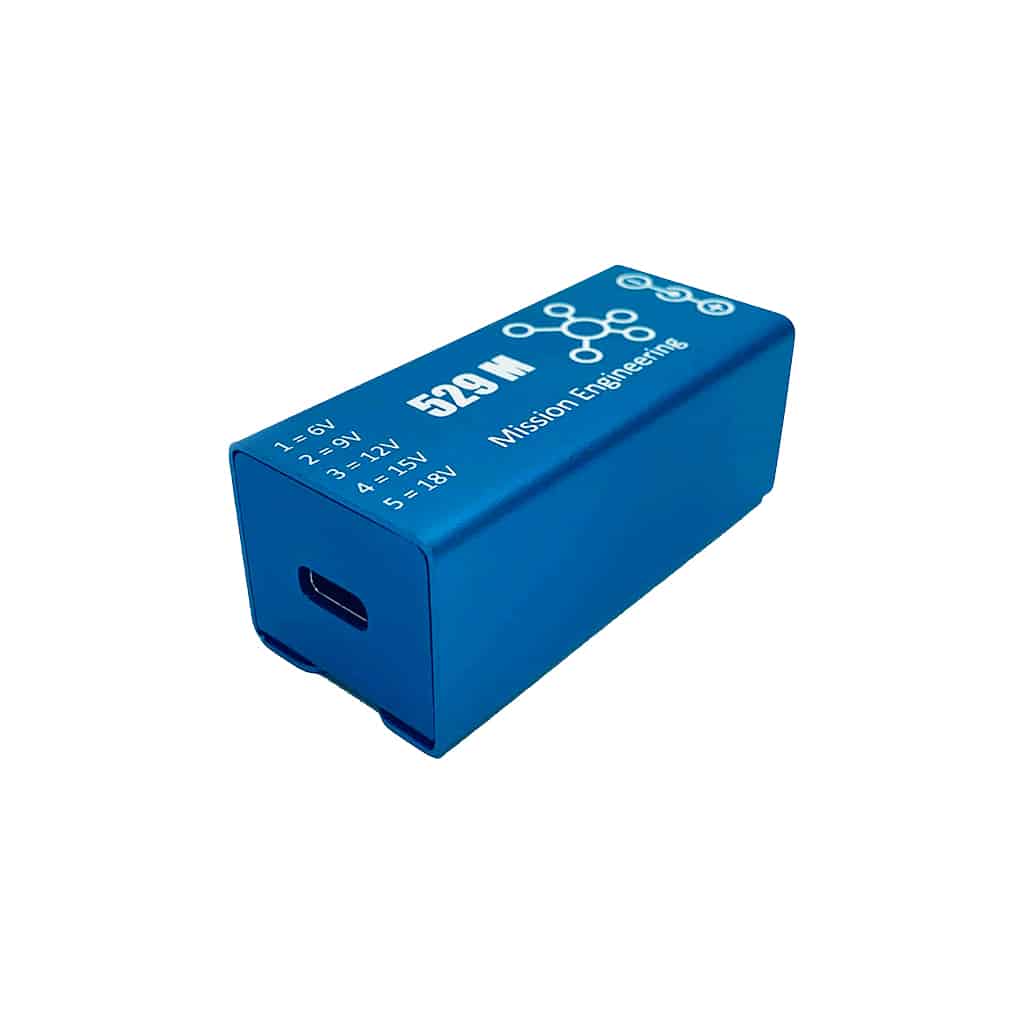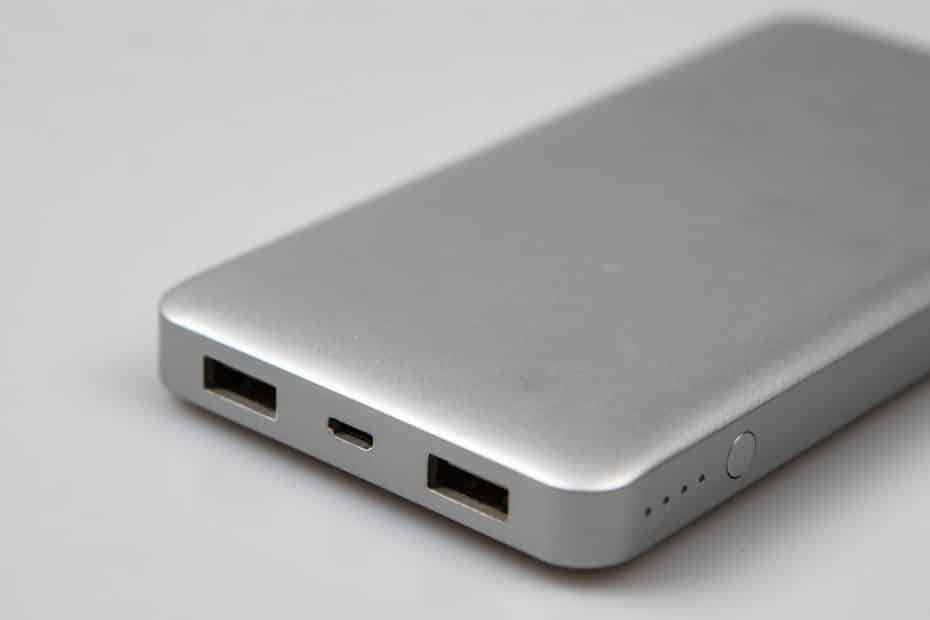USB was originally designed as a replacement for the various serial and parallel connectors for computer peripherals. Back in the mid 1990’s, portable computers were becoming more popular and the industry wanted a standard interface that used a smaller connector.
As well as carrying data, USB also added the ability to carry power. A single cable could be used both to communicate and power a device. In the first version of the USB specification, power was limited to a quite small 100mA at 5V. The power limits of USB have been gradually updated with new versions of the specifications, but they have still been quite limited for modern devices such as battery packs. To address this, the USB standards body introduced a new USB specification called Power Delivery (USB-PD).
Power Delivery brings two big upgrades.
1. Maximum power increases from 7.5W to 100W.
Although the previous generation has an additional specification called Battery Charging (USB-BC) that can support 25W, this isn’t available on all devices. Even then, PD still brings four times as much power.
2. Variable voltages.
Previous generations are limited to 5V, and getting to higher voltages from a USB connection required additional boost converters. USB-PD can support different voltages such as 5V, 9V, 12V and 20V.
Getting here required a couple of significant changes. Firstly, Power Delivery requires a USB-C cable. Secondly, there needs to be some intelligence in the devices, and in some cases the cable too, to negotiate the power features.
Previous to USB-C, you’ll recall that a USB cable has different connectors at each end. You usually do not see a USB-A – USB-A cable. One of the key reasons for this is to prevent two power sources from being connected together. A USB-C cable is the same at both ends. To prevent two power sources being connected together, PD devices communicate with each other to determine which should provide the power. The specification provides for role switching which means if your device supports it, it can be both a power source and a power sink. Think about connecting a power bank to a laptop. With role switching, the power bank can either power the laptop, or the laptop can recharge the power bank – with the same cable. Nice.
Voltage is also handled by the Power Delivery negotiation. When you connect a power bank to a charger, the charger communicates it’s capabilities to the power bank. It may say that it can support 5, 9 and 12V and what it’s current limit for each voltage is. The power bank then tells the charger what it prefers. For example, it may confirm that it requires 12V @2A. The charger then enables this and the power bank begins charging at the requested voltage.
An important thing to remember here is that although the specification supports a range of different voltages and currents, most devices will not support all of them. 100W chargers are still rare, and most battery packs will only support a subset, depending on their size and price point. So when you are choosing a battery or charger, it’s important to check that it can provide the voltages and currents that you need to power your device.

The Mission 529M is a USB-PD power converter for guitar effects and similar devices. The 529M performs the PD negotiation with a power source such as a portable power bank or wall charger and provides the power on a 2.1mm center pin negative connector. You select the voltage that you want the 529M to provide on the effects pedal power output using a small switch on the underside. The factory default is set to 9V. The 529M can support 5 different voltages and you’ll need to check these against the battery or charger that you want to use.
- 529 6V – requires USB-PD 5V
- 529 9V – requires USB-PD 9V
- 529 12V – requires USB-PD 12V
- 529 15V – requires USB-PD 15V
- 529 18V – requires USB-PD 20V
Check the specifications for the for the USB-PD output on your power bank. You should find something similar to this
- 5 V, 3 A
- 9 V, 2 A
- 12 V, 1.5 A
So, with this battery we can select 6V, 9V or 12V using the voltage selector switch on the 529M. This battery does not support 15 or 20V so we won’t be able to use those. If we request a voltage on the 529M that the source does not support, the output will remain at the nearest voltage level below that it does support. In this case if we select 15V or 18V, the output will remain at 12V.
Also be aware of the current limit. We can see that this battery pack supports 2A at 9V, so we would need to make sure that the total current draw from our connected devices does not exceed that.
If, we want the 529M to provide higher voltages or more current at the output, we’ll need to use a battery that can support it. High capacity power banks designed for laptop computer charging can often support the following:
- 5V, 3A
- 9V, 3A
- 12V, 3A
- 15V, 3A
- 20V, 3A
So this battery would support all of the available 529M voltages up to 3A. These power banks are larger and generally cost a bit more though, so you’d need to decide if the extra cost and weight is acceptable. If you are building a small fly rig and don’t use any pedals that require anything other than 9V, then you may choose the smaller battery. If you are building a large pedal board and need 18V or 3A, then the larger battery is likely the better option.
So before you buy a PD battery pack or charger, just remember to check the specifications to make sure it meets your requirements. One of the great things about USB batteries is the features keep increasing and the price keeps lowering, so if your needs change in the future, all you’ll have to do is just swap out the battery.

I am powering a Neural Quad Cortex. I have a Krisdonia 50,000 mAh power bank and forums have told me that I need a Mission 529M in order to use the USB connection on the power bank. What cables do I need? Does Mission offer them?
Hi guys. Which wall war or wall recharger you recommend for the 529M. Because I like the size of this one and I’m sure I can run my HX STOMP and 3 more pedals at the same time with a daisy chain. And of course which of the right cables I need for the optimal function of this unit.
I am going to use 18 volts with 200 ma witch power bank should I buy